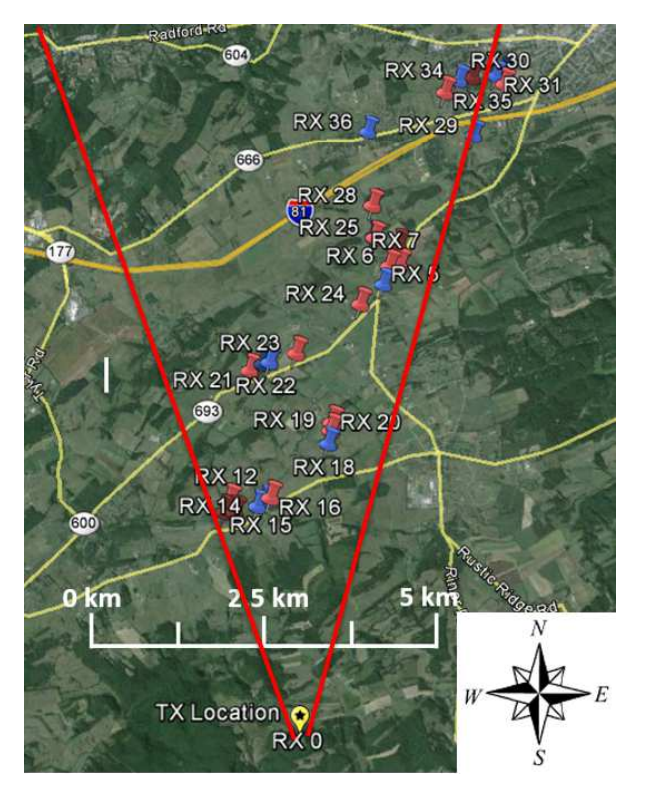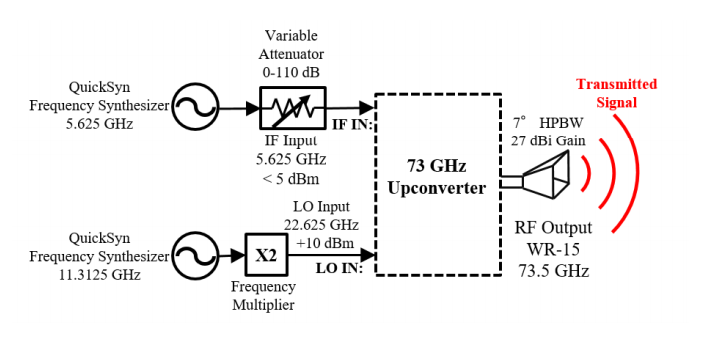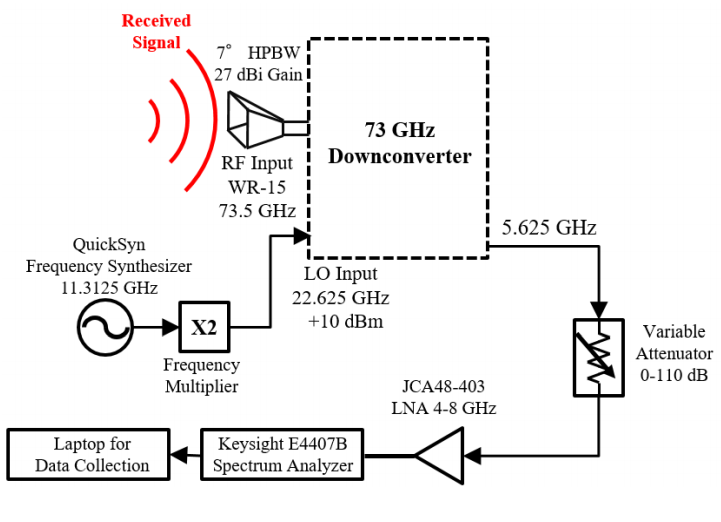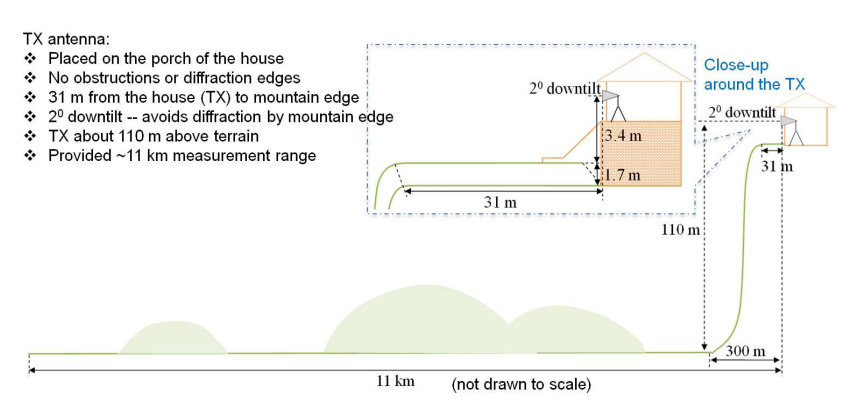In an experiment with 5G technology, millimeter waves traveled more than 10 kilometers

Technology 5G this summer passed a key test in a place where none of the locals did not expect to find it. In August, a group of students from New York University (NYU) loaded radio equipment into the van and set off on a ten-hour journey to the outskirts of Riner in southwestern Virginia. Once there, the young researchers installed a transmitter on the porch of their professor's small mountain house, Ted Rappaport, and directed him towards the forest.
The students then spent two long days scattering their suburban roads back and forth to find 36 places in the surrounding hills suitable for testing. Public parking is an ideal testing ground, but difficult to find on the way along country roads. In each place they put the receiver, who was looking for traces of millimeter waves in the mountain air, which came from the equipment located on the porch. Below is a diagram of the placement of receivers on the ground.
')

During the experiment, the group found out that the waves could “travel” more than 10 kilometers in rural areas, even if hills or crowns of trees blocked the direct path to the receiver. The team discovered waves from the transmitter at distances of up to 10.8 kilometers at 14 points, which were in direct visibility, and at 10.6 kilometers at 17 points, where the signal was reflected from hills or deciduous groves. All this was achieved when broadcasting at 73 GHz with a minimum power of less than 1W.


Schemes of work of transmitting and receiving signal equipment
“I was surprised that we exceeded 10 kilometers with several tens of milliwatts,” says Rappaport. “I assumed that we could get out of the line of sight for several kilometers, but we were able to go beyond ten.”
The 73GHz frequency band is much higher than the traditional frequencies used in cellular communication. In June, the US Communications Commission opened the 11GHz spectrum in the millimeter-wave range (which covers from 30 to 300GHz) to service providers who are developing 5G technology.
Rappaport is confident that their results demonstrate the potential for using millimeter waves in both rural micro-cells and large base stations. Until now, waves of this length have been used for broadband Internet access through a fixed link, in which information travels between two fixed points. Now 5G technology can be successfully used for cellular communication.
Robert Heath, wireless technology expert at the University of Texas at Austin, notes that the work of the NYU team contributed to the development of 5G. “I think this is valuable because many people did not think about extended 5G bands in rural areas. It seems to them that the range is limited to high frequencies. ”

The location of the transmitting signal of the antenna relative to the environment
Last year, the Rappaport group demonstrated that a receiver located on the street can successfully catch a 5G signal broadcast at 28GHz and 73GHz, at a distance of 200 meters, using less than 1W of transmitter power, even if the way to it is blocked by tall buildings. The work of scientists showed that the reflection of signals from the facades of buildings still allows for consistent coverage of the network at least outside the street. Whether the result of the latter study means the same for suburban areas is not yet known. The head of the research team is confident that their work will help to commercialize the technology, including replacing the fiber-optic connection and transport communications networks.
“The public was mistaken in thinking that millimeter waves cannot travel long distances in clear weather in free space. In fact, they can spread as far as the current lower frequencies, if the antennas are the same size. I think this technology is viable for mobile communications, ”notes Rappaport.
A group of scientists observed the behavior of millimeter waves in the countryside in order to evaluate the propagation standard that the 3GPP consortium advanced to model waves in rural areas. In version 14 of the standards, the signal strength emitted by the base station outside the city is measured according to factors such as tower height, average user height, building height, street width, and the frequency that is used to transmit the signal.
Researchers at New York University believe that the standard was adopted somewhat hastily and is based on the use of lower frequencies, which are poorly suited to accurately predict the behavior of waves at high frequencies. Therefore, according to the team, the standard exaggerates losses over long distances.
Other scientists are skeptical about the achievement of the team at New York University. Professor Gabriel Rebaits, who conducts wireless technology research at the University of California , indicates that the tests were conducted on two cloudless days. Rain can lead to a deterioration of 73 GHz signals at a level of 20 decibels per kilometer, which is equivalent to reducing the signal intensity by a factor of 100 per kilometer of track. He believes that ultimately 5G will bring more benefits in cities, but doubts the feasibility for rural cellular networks.
George McCartney, Jr., a graduate student at the Faculty of Wireless Engineering at New York University, believes that the 5G standard will be relevant to the countryside in five or ten years after it has finally “matured”. In order for this technology to be firmly established in our lives, antennas must transmit a signal with high accuracy in order to accurately verify that the signal reaches a specific user. This is important because waves can be reflected from objects and propagate in different ways from the transmitter to the receiver. Regarding the successful use of millimeter waves outside the urban environment in the next few years, George says: “I’m a little skeptical simply because it takes a lot of small antenna elements and will have to set the direction of the signal and control it.”
Scientific work published on arXiv.org ( ArXiv: 1608.05384v2 [cs.CV])
Source: https://habr.com/ru/post/372855/
All Articles